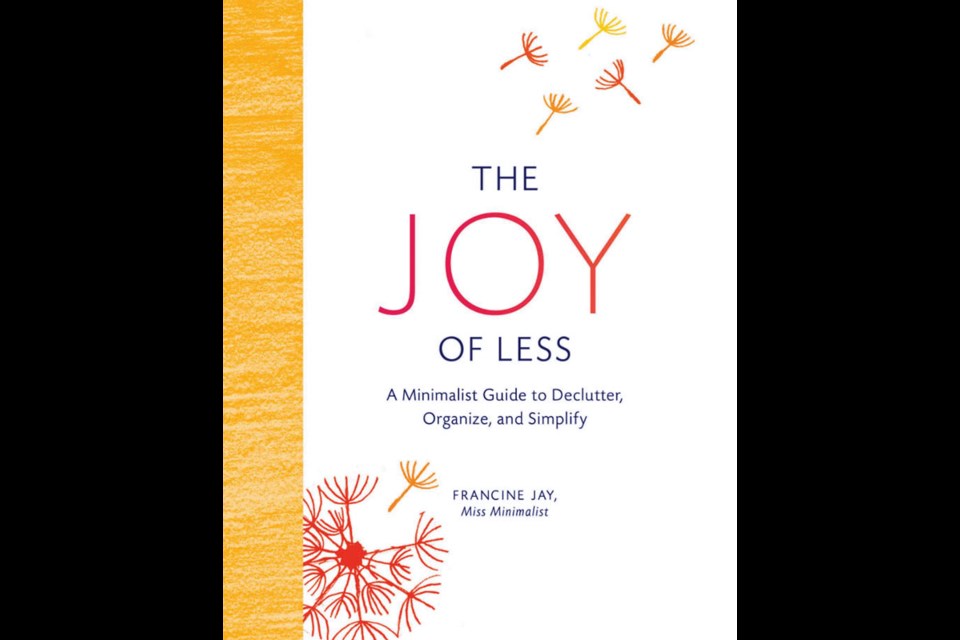- The Joy of Less, by Francine Jay, Chronicle Books, 286 pages, $24.
For many of us, life has been a long process of accumulation. As adults there is a point where we may find ourselves overwhelmed by all of the stuff that has found its way into our homes and the thought of bringing this monster we’ve created under control seems an impossible task.
Francine Jay, also known as “Miss Minimalist,” is about to become your new best friend. With the kind of frank advice a true friend would give, she is ready to be your guide to declutter, organize and simplify your life.
The word minimalist may conjure up images of stark, empty rooms that have nothing to do with your lifestyle but with Jay’s help you can discover how to part with the unnecessary and turn your home into a clutter-free space that puts you in charge.
Beginning with an introduction to the philosophy behind the minimalist approach, she argues that “our stuff exists to serve us, not the other way around.”
Using her “streamline method,” Jay aims to help readers see their possessions in a new light.
“Decluttering is infinitely easier when you think of it as deciding what to keep, rather than deciding what to throw away,” she writes.
From how to tackle each room in the house to how to get your family members to join in the process, Jay discusses every aspect in a friendly and non-judgmental tone.
This may be the book that helps you change not just the interior of your home but how you view the acquisition of all new items in the future.
• • •
- Works, by Tom Kundig, Princeton Architectural Press, 300 pages, $88.
With imagination and ingenuity Tom Kundig has earned a special place in modern architecture. His take on modernism has transcended the cold, impersonal spaces so often presented as contemporary homes. Instead he has created visionary buildings that connect the interior spaces to the world outside in fascinating ways that make each one unique.
The Seattle-based architect has long pursued a style of modernism that maintains a strong exterior to stand against the elements while the interior is filled with light from the expansive windows. His layouts embrace the concepts of shared space and private spaces, allowing for both to exist as sanctuaries but be connected.
Many of the sites he has built on are blessed with incredible views and Kundig removes the barriers to them by incorporating amazing mechanical gizmos to move entire walls to open the space to the outdoors. By using creative levers and gears in the mechanisms, thousands of pounds of weight are moved by hand-powered wheels. These gizmos designed by Phil Turner are uniquely created for each property.
The 16 different projects that are featured in this book range from personal residences in Hawaii, Whistler and New York to a winery tasting room, the Tacoma Art Museum and the Art Stable in Seattle. Presented through stunning photographs, Kundig’s own sketches, architectural drawings and comments help illustrate the vision he brings to every project.



